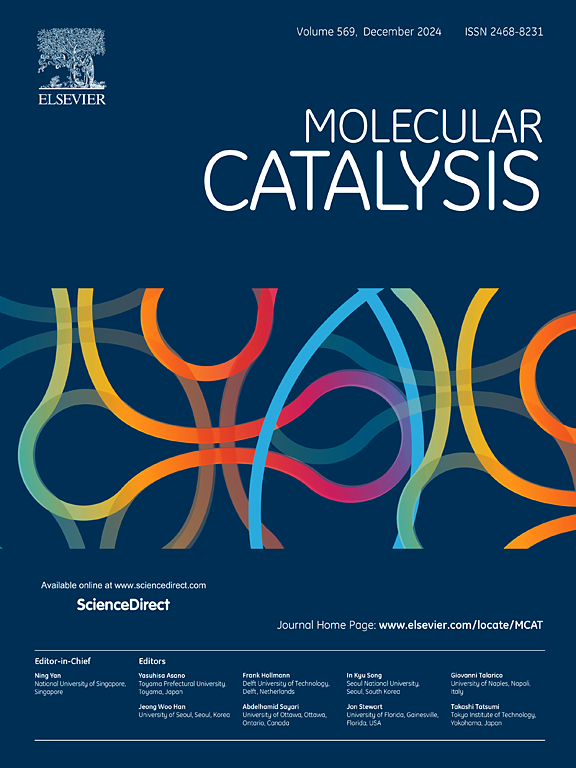Influence of synergy effect over the catalyst derived from CuFe-LDHs on SCR-C3H6: An in situ DRIFTS study
IF 3.9
2区 化学
Q2 CHEMISTRY, PHYSICAL
引用次数: 0
Abstract
The synergy between multi-metals can enhance the catalytic performance of catalysts but lacks research from the perspective of reaction mechanisms. Hence, the correlation between the synergy effect and the SCR-C3H6 reaction mechanism was investigated over the CuFe-LDOs catalyst derived from the precursor CuFe-LDHs, and single metal oxide catalysts (CuO, Fe2O3). XPS and H2-TPR techniques reveal the existence of the synergy effect between Cu and Fe, which results in the superior catalytic activity of the CuFe-LDOs catalyst than single metal oxide catalysts, as well as the generation of CuFe2O4 over the CuFe-LDOs catalyst. Numerous static and dynamic In situ DRIFTS and TPSR experiments indicate that the synergy effect encourages the creation of nitrogenous species, especially active intermediates like monodentate, bidentate, and bridging nitrates. Besides, the production of active carboxylate acetate also obtains enhancement owing to the synergy effect. Importantly, R-NCO generates and accumulates profited from the synergy effect, working as the vital intermediate for SCR-C3H6, and is ultimately hydrolyzed to CO2, N2, and H2O. These results demonstrate that the improvement of catalytic activity for the CuFe-LDOs catalyst benefits from the promotion of the synergy effect on active intermediates. Eventually, a possible SCR-C3H6 reaction pathway on the CuFe-LDOs catalyst is established.

求助全文
约1分钟内获得全文
求助全文
来源期刊

Molecular Catalysis
Chemical Engineering-Process Chemistry and Technology
CiteScore
6.90
自引率
10.90%
发文量
700
审稿时长
40 days
期刊介绍:
Molecular Catalysis publishes full papers that are original, rigorous, and scholarly contributions examining the molecular and atomic aspects of catalytic activation and reaction mechanisms. The fields covered are:
Heterogeneous catalysis including immobilized molecular catalysts
Homogeneous catalysis including organocatalysis, organometallic catalysis and biocatalysis
Photo- and electrochemistry
Theoretical aspects of catalysis analyzed by computational methods
 求助内容:
求助内容: 应助结果提醒方式:
应助结果提醒方式:


